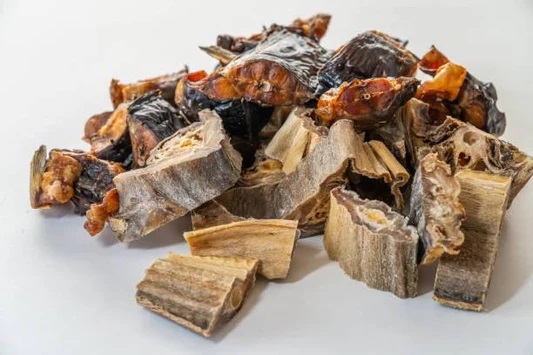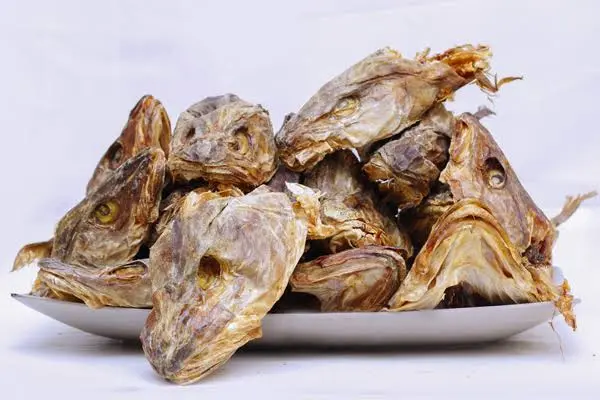Stock Fish
Stockfish is air-dried on wooden racks known as “hjell” from February to May. The climate in northern Norway, with its cold air and moderate humidity, is ideal for this natural drying process.





CropCompass has strict regulations and quality control measures to ensure the high quality of stockfish. The fish used is typically of the highest quality, caught from the cold, clean waters of the North Atlantic. The best stockfish comes from cod caught during the peak season between January and April. This is when the cod migrate to the coastal waters of northern Norway to spawn, making them abundant and of the highest quality. It contains about 80% protein by weight, making it an excellent source of protein. Stockfish is rich in essential nutrients such as vitamin D, vitamin B12, omega-3 fatty acids, calcium, and iron.
Stockfish cutlets are a delicious dish made from rehydrated stockfish, typically incorporating various spices and ingredients to enhance the flavor. Here’s an overview and a basic recipe:
Stockfish Cutlets
Characteristics:
Texture: Once rehydrated, stockfish has a firm yet flaky texture.
Flavor: The flavor is rich and slightly salty, owing to the drying process. Soak the dried stockfish fillets in water for 24-48 hours, changing the water several times to remove excess salt. Boil the rehydrated fillets until tender, then drain and flake the fish.
Stockfish head, like the fillet, is a dried product often used in various traditional dishes. The heads of stockfish, typically cod, are rich in collagen and have a strong flavor that is prized in many culinary traditions.
Stews and Curries:
Flavor Enhancer: Adding stockfish head to stews and curries can enhance the overall flavor of the dish, providing a depth that other fish parts may not offer.
Nutrient-Rich: The head contains various nutrients, including omega-3 fatty acids, vitamins, and minerals.
Stockfish fillet refers to dried cod that has been filleted and preserved by drying. This traditional method of preservation has been used for centuries, particularly in Norway, where stockfish has played a significant role in the economy and cuisine. Here’s an overview of stockfish fillet:
Production Process:
Fishing: Stockfish is usually made from cod, though other white fish like haddock and pollock can also be used.
Preparation: The fish is cleaned, gutted, and filleted.
Drying: The fillets are hung on wooden racks, called “hjell,” in open air to dry. This process can take several months and relies on cold air and wind to slowly dehydrate the fish.
Maturation: After drying, the fish is matured to develop its flavor. This can take several more months.
- Italy: Known as “stoccafisso” or “baccalà,” it is used in dishes like “baccalà alla Vicentina” and “baccalà mantecato.”
- Nigeria: Called “okporoko,” it is a popular ingredient in soups and stews, imparting a unique flavor.
- Portugal: In Portuguese cuisine, stockfish is known as “bacalhau” and is featured in numerous traditional dishes like “bacalhau à Brás” and “bacalhau com natas.”

